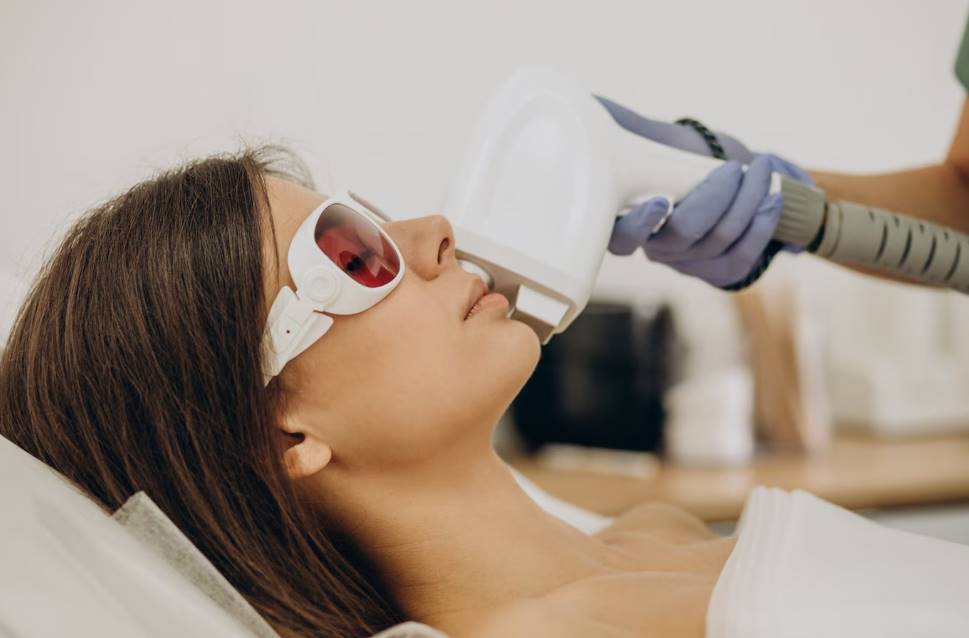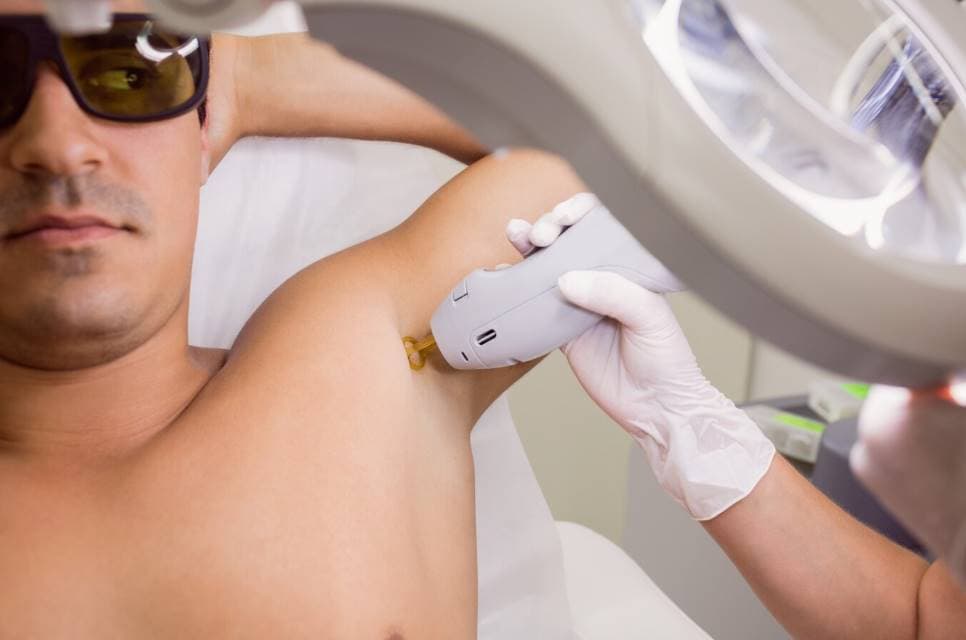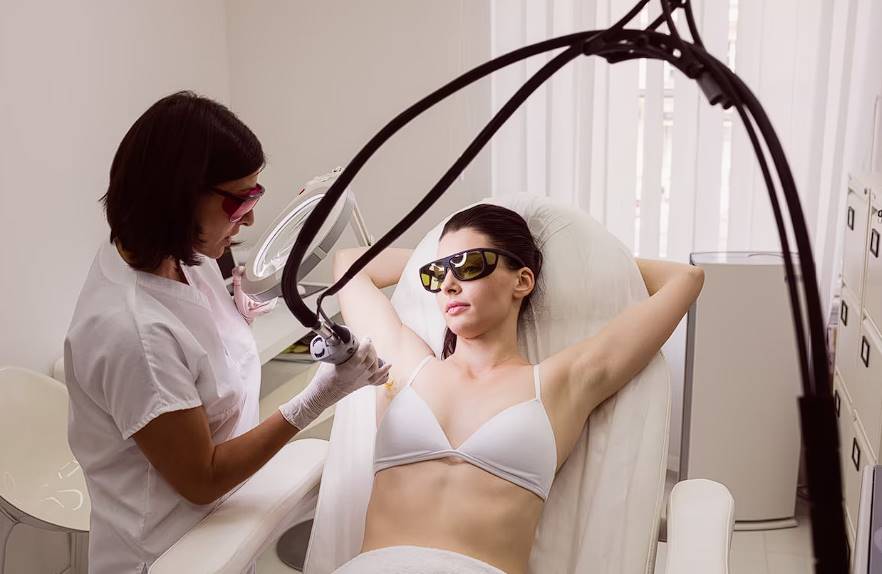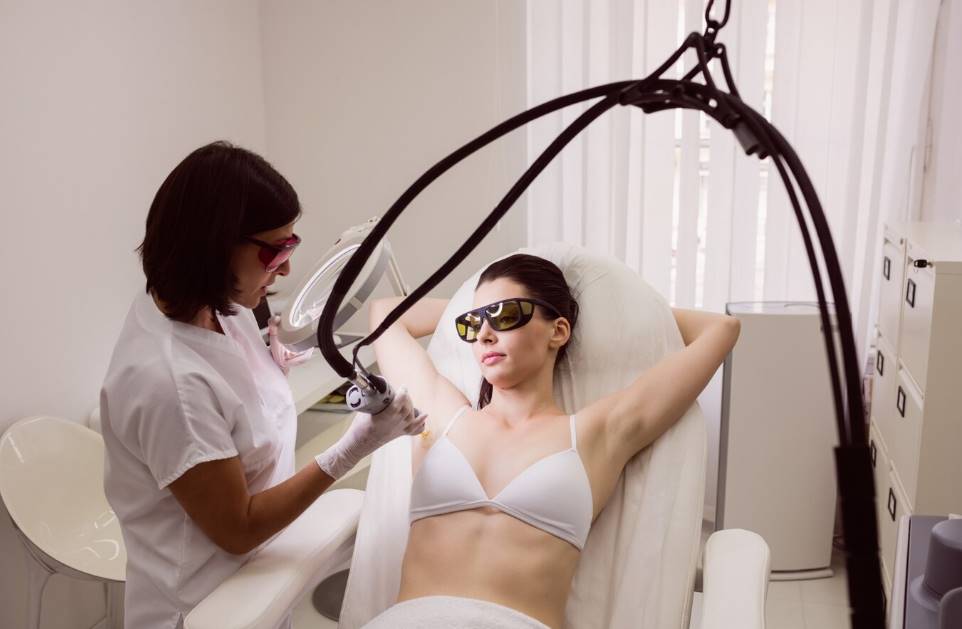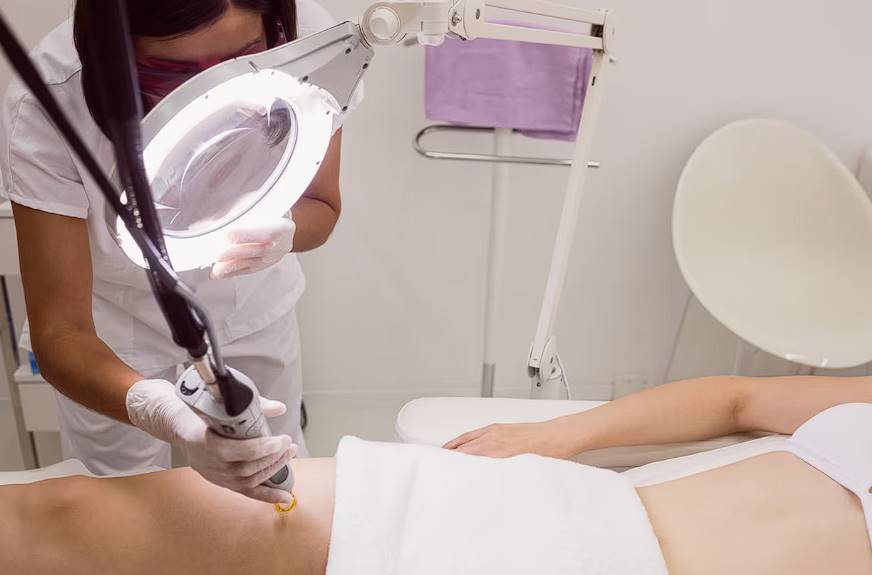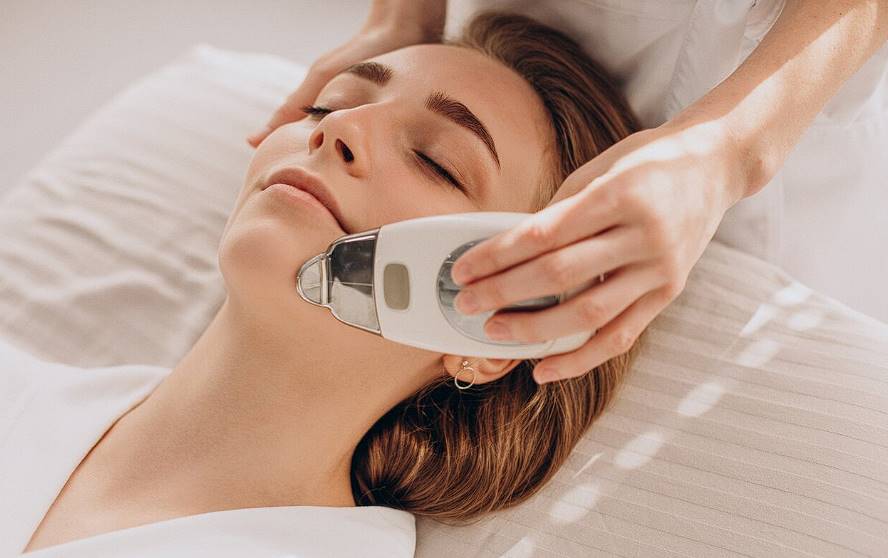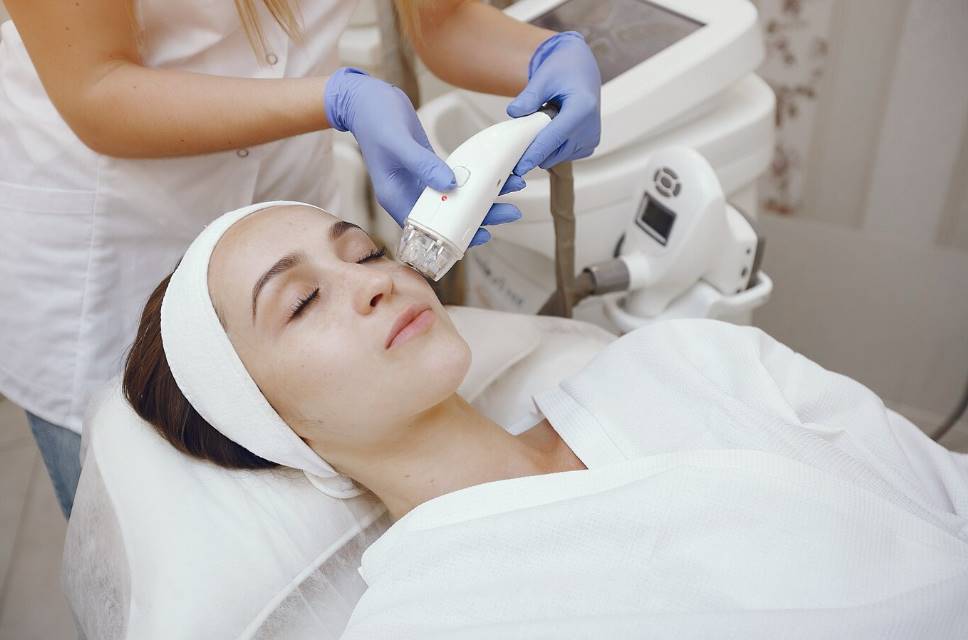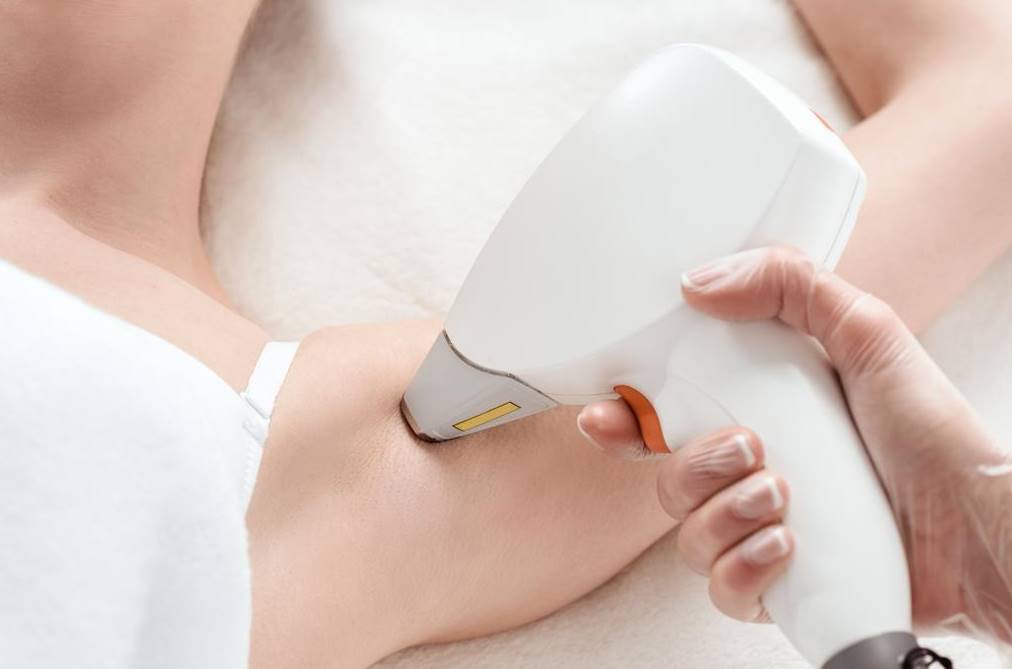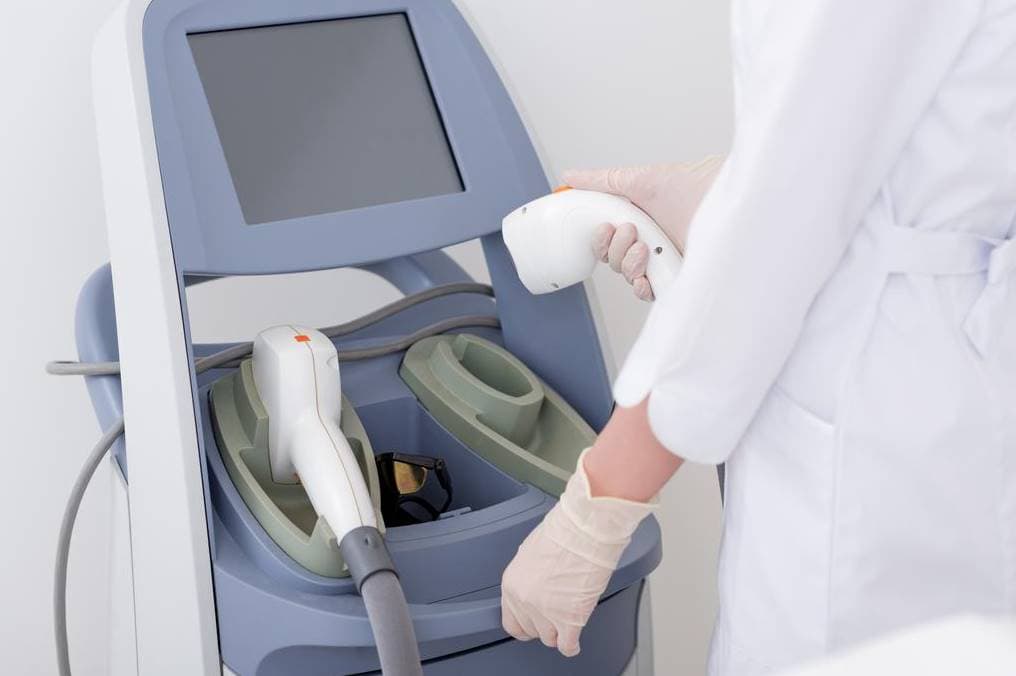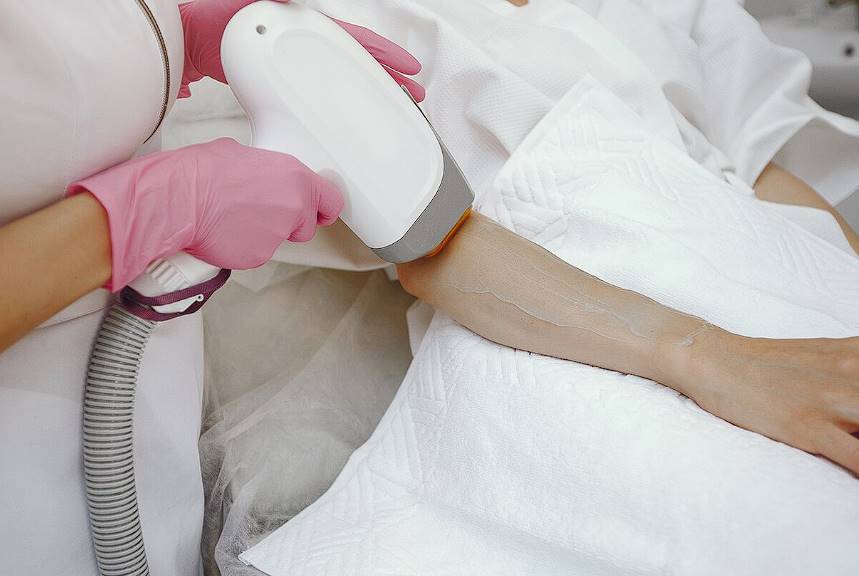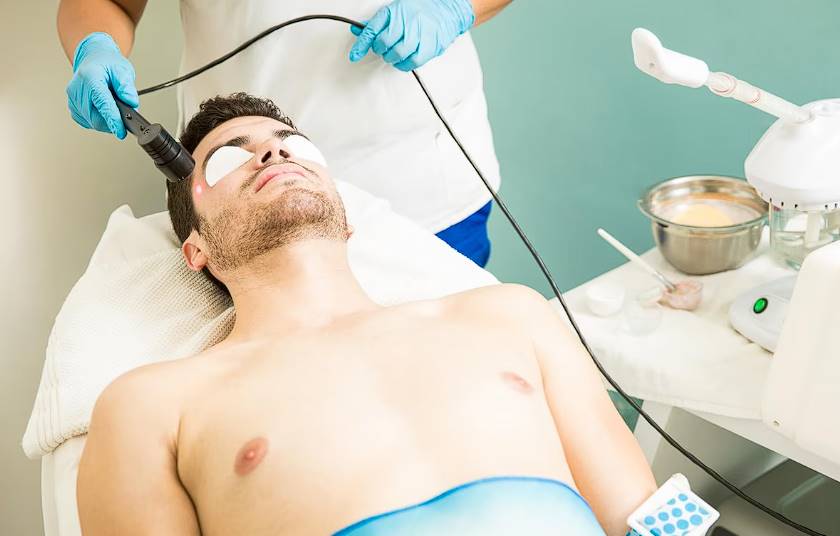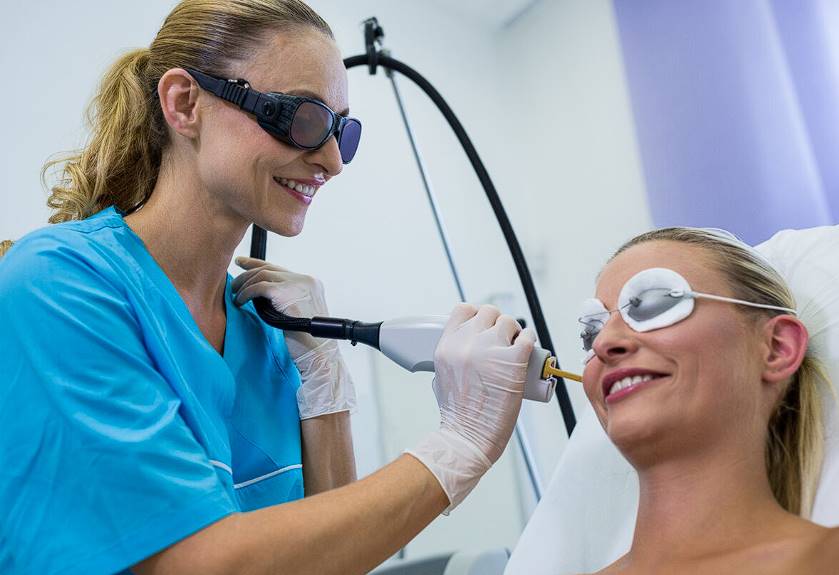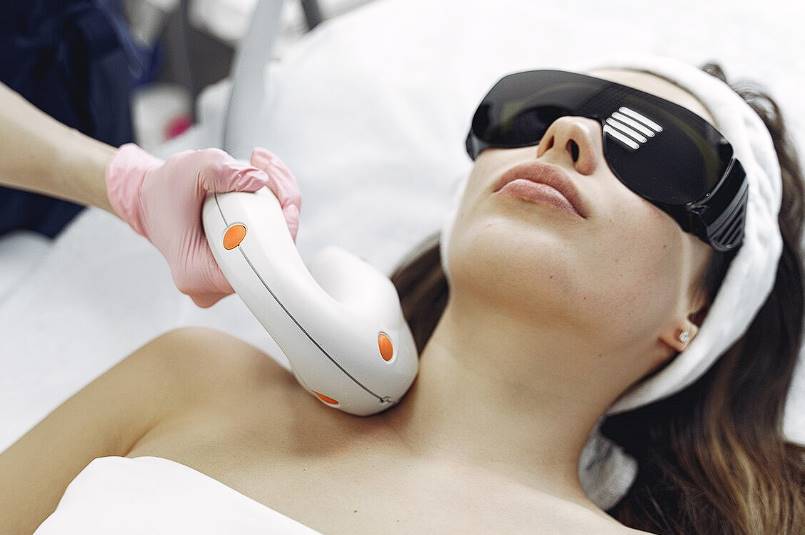The continuous preoccupation with unwanted body hair has prompted a wide range of hair removal techniques. Shaving, waxing, and plucking are common traditional methods, but they only provide brief relief and need constant upkeep and discomfort.
More and more people are turning to laser hair removal in recent years because of the enduring effects and silkier skin it promises. Is laser hair removal the best option, though? In order to provide a thorough response to this topic, we will examine all aspects of laser hair removal, from their potential advantages to their possible negatives.
This article will provide you the information you need to determine if laser hair removal is a good option for you, whether you're sick of fighting unwanted hair or just interested about this cutting-edge method.
What Is Laser Hair Removal?
Laser hair removal is a method used to get rid of unsightly body hair. It doesn't involve making incisions in the skin, so it's noninvasive. Any portion of the body is fair game for this procedure, although the following are the most common:
- Face.
- Underarms.
- Bikini area, or any areas that grow pubic hair.
- Back.
- Legs.
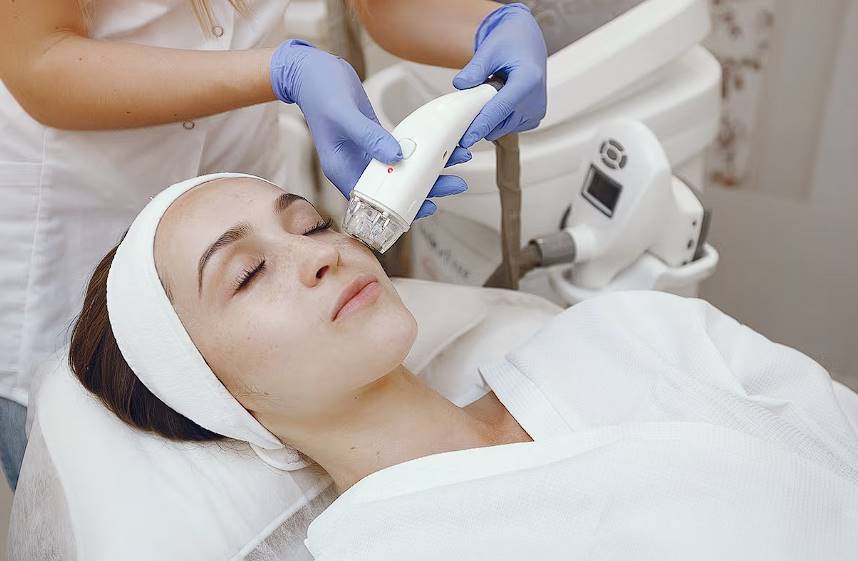
A Brief History Of Laser Hair Removal
The modern method of laser hair removal can be traced back to five distinct epochs.
1960s
First-generation lasers, often known as "wave 1 lasers," produced a steady stream of light. However, because of the inability to modulate such a beam, wave 1 lasers became obsolete. There was too much potential for long-term harm to the skin.
1970
Wave 2 lasers appeared in the 1970s. These lasers were a tremendous upgrade to the ones seen a decade previously. These enabled a beam of radiation to be directed to specific hair follicles through a fibre optic probe. The FDA yanked the wave 2 laser because it was too complicated to use and did not live up to its claims, but it was never sent off for testing.
1980s
Lasers of wave 3 generation were developed. These lasers weren't significantly better than what came before. Although they had better targeting than wave 2 lasers, they were still too time-consuming and inefficient for laser hair removal, therefore they were phased out.
1990s
The FDA approved the wave 4 laser in 1990, marking the beginning of laser hair removal as we know it today. The chromophore (what the laser hits) was a carbon-based lotion. The carbon was heated by the laser, and the resulting shock wave would penetrate and destroy the hair follicle. The wave 4 laser's only drawback is that it has the potential to harm non-target cells and tissue as well.
1997
The fifth generation of lasers appeared in 1997. The FDA approved the wave 5 laser because of its ability to target melanin in hair. The product's enhanced reliability and efficiency result from its user-friendliness and integrated cooling system. Wave 5 lasers are the most cutting-edge option for permanent hair reduction and are widely utilised today.
The Benefits Of Laser Hair Removal
If you're looking for a long-term solution to undesirable hair, laser hair removal can help. Let's take a closer look at the major advantages.
Hair follicles can be precisely targeted with laser technology. The concentrated beams of light are absorbed by the melanin in the hair follicles, causing damage to the follicles while leaving the surrounding skin unharmed. This specific method guarantees efficient hair removal with less risk of harm.
The time savings associated with laser hair removal is another major perk. Unlike often repeated sessions of shaving or waxing, the results of laser hair removal stay far longer. In the long term, you'll spend less time and energy maintaining the results after you've achieved the desired reduction.
The use of painful and irritating methods like plucking and waxing is become unnecessary thanks to laser hair removal. Ingrown hairs, as well as the lumps and redness they might cause, are less likely to appear after laser hair removal because the hair is removed from the root.
The adaptability of laser hair removal is a major plus. Legs, underarms, bikini lines, and other areas of the body are all fair game for the operation. Laser hair removal can successfully target and treat both large and tiny regions that need hair reduction.
Having hairless skin can do wonders for one's sense of self-worth. With laser hair removal, you can say goodbye to unwanted hair growth and the time-consuming maintenance that comes with it. You'll feel more confident with your appearance and at ease in your own skin.
In sum, there are many upsides to removing unwanted hair with a laser. It has gained popularity as a means to permanently remove unwanted hair, as its use is generally considered safe and effective.
Eligibility Criteria for Undergoing Laser Hair Removal
Essentially, laser hair removal has a wide-reaching applicability and can benefit nearly anyone looking for a long-term solution to unwanted hair. While it is predominantly considered a cosmetic treatment, its benefits extend beyond just aesthetic improvements. For many, it eliminates the routine need for daily shaving.
Medical Conditions Addressed
Laser hair removal can be a potential treatment for medical conditions characterised by excessive hair growth. Notably, it can be beneficial in treating:
- Hirsutism: A condition where women experience male-pattern hair growth.
- Hypertrichosis: A condition that causes excessive hair growth and affects both men and women.
Underlying Causes for Excessive Hair Growth
Several factors can contribute to excessive hair growth that may make laser hair removal an attractive option:
- Medicinal Factors: Certain medications, including anabolic steroids and contraceptives, could contribute.
- Hormonal Fluctuations: Elevated levels of testosterone or other androgens can trigger excess hair growth.
- Hereditary Factors: Genetic predispositions inherited from family can be a contributing element.
- Polycystic Ovarian Syndrome (PCOS): A common condition that can result in excessive hair growth.
- Hormone-producing Tumours: Although rare, tumours that secrete hormones could be a causal factor.
Optimal Candidates for the Treatment
While laser hair removal is broadly applicable, the most effective results are often seen in individuals with a fair complexion and dark, coarse hair. This is because the contrast between the skin and hair allows for more effective heat absorption by the hair follicles. Those with lighter hair shades such as blonde, grey, white, or red may not experience the same level of efficacy in treatment.
While laser hair removal has general benefits for anyone looking to reduce or eliminate unwanted hair, it also has specific applications for treating medical conditions associated with excessive hair growth. The effectiveness of the treatment can, however, be influenced by factors like skin tone, hair colour, and underlying medical conditions.
Who Isn’t Laser Hair Removal Suitable For?
Some people should not get laser hair removal at all, while others should take extra measures and talk to a doctor first.
Pregnancy
Pregnant women should avoid getting laser hair removal. This is because no reliable studies have been done to prove its safety. Until your hormone levels have stabilised after giving birth, you should wait to begin the treatment.
Keloid Scars
Laser hair removal should not be performed in areas where keloid scars or hypertrophic scarring have formed. You should talk to your doctor about this.
Light Sensitivity
If a patient is extremely photosensitive, they shouldn't undergo the procedure. An increased sensitivity to light has been linked to the use of antidepressants, anticoagulants, and nonsteroidal anti-inflammatory medicines.
Is Laser Hair Removal Painful?
It's normal to feel a little tender, especially in sensitive areas like the armpits, but you shouldn't be in any pain. Many folks have remarked that laser hair removal feels like little rubber bands snapping against their skin.
Topical numbing lotion or an ice pack, both of which can be purchased at any drugstore in advance of your Barr Aesthetic visit, can help alleviate any discomfort you may have. This way, when it's time for treatment, your skin will already be numbed.
Pre-Treatment Checklist
- Don't do anything to the region for four weeks beforehand, whether it's waxing, tweezing, epilating, applying lotions, or bleaching. Verify that you are not currently using or have just stopped taking any photosensitive drugs.
- If you are pregnant, nursing, or trying to conceive, you should not use this drug.
- Avoid using any self-tanning products before your scheduled visit.
- Use a high-quality sunscreen and stay out of the sun for two weeks before to the treatment to protect your skin.
- Avoid getting a sunburn by keeping the area out of direct light for at least four to six weeks before the procedure.
- Ensure the area to be treated is entirely clean-shaven 12 hours prior to treatment for optimal results.
Post-Treatment Instructions
- Redness and pimples are completely natural reactions.
- For best results, wash the treated area gently.
- Do not put on any cosmetics or use any skin care products (including lotions, moisturisers, and deodorants) for the first 24 hours.
- Dead hair follicles will start to fall out anywhere from 5-30 days after therapy.
- Hair loss can be sped up and revitalisation achieved by exfoliation.
- Protect your skin from the sun's rays by wearing protective clothing and using sunscreen.
- Keep your hands off the affected region! No plucking, scratching, waxing, threading, or tweezing!
Laser hair removal is a trusted and safe option for permanently removing unsightly body hair. It's a great option for individuals who want to save the time and effort of shaving and waxing but still want smooth, long-lasting results in just a few weeks.
Now that you know what to do before and after your hair removal treatment, you can relax and enjoy your newfound freedom from unsightly hair for good. Get more comfortable in your own skin by scheduling an appointment now!

Key Considerations for Opting for Full-Body Laser Hair Removal
Preparing the Skin: Shave, Don't Wax
Prior to the initial session of laser hair removal, individuals should abstain from waxing, plucking, threading, or bleaching the treatment area for at least four weeks. These hair removal techniques can interfere with the laser's ability to target the follicle.
Conversely, shaving the treatment zone 24 hours before the session is highly recommended. A manual razor is ideal for achieving a clean, close shave. Additionally, the skin must be devoid of any cosmetics, lotions, deodorants, or sunscreens at the time of treatment.
Open Communication about Medication
Being forthcoming about any medications taken is essential when undergoing laser hair removal. Certain medications, such as antibiotics, have photosensitive properties that could potentially lead to painful skin burns during the laser treatment. To mitigate such risks, technicians should be kept updated about any changes in medication since the client's last session.
Multiple Sessions: A Commitment to Routine
Laser hair removal isn't a one-off solution; it necessitates a series of appointments to ensure maximum efficacy. Diligence in maintaining a regular schedule of sessions is paramount for lasting results.
Hair growth occurs in varying cycles; therefore, multiple treatments are typically required to target each hair follicle during its ideal growth phase. Commonly, a series of 6 to 8 sessions, spaced 2 to 3 weeks apart, is suggested for optimal results.
Longevity of Results: Not Always Permanent
The results of laser hair removal are generally long-lasting, particularly for body treatments. If hair does reappear, it is often much finer and sparser than before. However, for facial treatments, permanency cannot always be guaranteed.
While some individuals have reported that their facial hair did not grow back for a decade or more, others have experienced quicker regrowth and have required yearly maintenance sessions to sustain the results.
Achieving the desired results from full-body laser hair removal requires careful preparation, open communication about medications, and a commitment to a regular treatment schedule. Additionally, it's vital to manage expectations regarding the longevity of the treatment's effects.
Conclusion
Laser hair removal is a way to get rid of unwanted body hair that doesn't involve cutting the skin. It has been used for more than 50 years and gives users silkier skin that lasts. Starting with wave 1 lasers in the 1960s, the current method of laser hair removal has gone through five generations.
Laser hair removal has perks like being able to target hair follicles more accurately, saving time, and reducing the risk of harm. It also gets rid of the need for painful and annoying methods like plucking and waxing, since ingrown hairs and lumps are less likely to happen after the process. Also, laser hair removal is flexible enough to work on both big and small areas that need less hair.
Laser hair removal can be used for cosmetic purposes, to treat medical conditions like hypertrichosis, and to treat underlying causes like medications, hormonal changes, genetic predispositions, Polycystic Ovarian Syndrome (PCOS), and tumours that make hormones.
Laser hair removal has many pros and cons, such as long-lasting effects, less pain and discomfort, and a higher sense of self-worth. It is thought to be safe and successful, so many people use it to get rid of hair permanently. Before choosing this treatment, it's important to think about the possible risks and side effects.
Laser hair removal is a common way to get rid of unwanted hair, but its success can depend on things like skin tone, hair colour, and underlying medical conditions. People who are pregnant, have keloid scars, or are sensitive to light should not get laser hair removal. An ice pack or lotion that numbs the skin can help relieve pain during the process.
Before treatment, you should not use any drugs that make you sensitive to light, stay away from self-tanning products, use a good sunscreen, and shave the area 12 hours before treatment. After treatment, you will be told to gently wash the area that was treated, not wear makeup or use skin care products, and exfoliate the area.
Laser hair removal on the whole body takes a series of meetings, usually 6 to 8 sessions about 2 to 3 weeks apart. Most of the time, the effects last, especially for body treatments, but this isn't always true for facial treatments. Some people have said that their facial hair didn't grow back for 10 years or more, while others' hair grew back faster and they had to do upkeep once a year.
To get the results you want from full-body laser hair removal, you need to plan carefully, talk openly about medications, and stick to a regular treatment routine. It's also important to have realistic ideas about how long the treatment will last.
Content Summary
- Laser hair removal offers a long-term solution for eliminating unwanted body hair.
- Traditional methods like shaving and waxing provide only temporary relief and require constant upkeep.
- Laser hair removal can treat a variety of body parts, including the face, underarms, back, and legs.
- This method is non-invasive, meaning it doesn't require any cuts or incisions.
- Laser technology has evolved over five distinct epochs since the 1960s, with the latest being the most effective and safest.
- Laser hair removal specifically targets hair follicles, leaving the surrounding skin unharmed.
- It's a time-saving solution compared to frequently repeating traditional hair removal methods.
- Laser treatment significantly reduces the risk of ingrown hairs.
- The method is versatile and can be used on both large and small areas.
- Laser hair removal can boost one's self-esteem by eliminating unwanted hair.
- The treatment is broadly applicable and can benefit almost anyone looking for a permanent hair removal solution.
- The method can be used as a treatment for medical conditions that result in excessive hair growth.
- Hormonal fluctuations, medication, and hereditary factors can contribute to the conditions treated by laser hair removal.
- The best candidates for laser treatment have a fair complexion and dark, coarse hair.
- Pregnant women are advised to avoid the treatment due to a lack of sufficient safety studies.
- The procedure isn't suitable for individuals with keloid scars or hypertrophic scarring.
- Those with extreme photosensitivity should avoid laser hair removal.
- The treatment is generally not painful, with sensations likened to rubber bands snapping against the skin.
- Topical numbing lotions or ice packs can be used to alleviate any discomfort during treatment.
- Pre-treatment guidelines suggest abstaining from waxing, plucking, and bleaching the treatment area for at least four weeks.
- Open communication about medications is crucial, especially those with photosensitive properties.
- Multiple sessions are often required for optimal results, generally spaced 2-3 weeks apart.
- Though long-lasting, the results from laser hair removal may not always be permanent.
- Facial treatments may require periodic maintenance to sustain results.
- Dead hair follicles start to fall out 5-30 days post-treatment.
- Redness and small bumps are normal post-treatment reactions.
- Cosmetics and skincare products should be avoided for 24 hours post-treatment.
- Sun protection is essential both before and after the treatment.
- Exfoliation can speed up hair loss and revitalise the skin after treatment.
- It is important to keep the treatment area clean and refrain from scratching or picking.
- Laser hair removal is a trusted and safe option for those desiring permanent hair reduction.
- The treatment is both effective and generally safe, making it increasingly popular.
- Clients should be cautious about using any photosensitive medication around the time of their treatment.
- Sunburns should be avoided for at least 4-6 weeks before the procedure.
- The skin area to be treated should be cleanly shaven 12 hours prior to the treatment for best results.
- Patients should refrain from using self-tanning products before their scheduled laser treatment.
- A high-quality sunscreen should be applied for two weeks prior to the laser session.
- Laser hair removal offers smoother skin, and results are long-lasting compared to traditional methods.
- The treatment significantly reduces daily shaving needs, saving both time and effort.
- Laser hair removal is generally not suitable for those taking certain medications like antidepressants and anticoagulants due to increased light sensitivity.
- It's crucial to discuss any new medications since the last session with the technician.
- Self-esteem and body confidence often see an uplift after successful laser hair removal treatments.
- Clients should adhere to the suggested session schedule for the most effective and lasting results.
- Unlike the wave 1 laser from the 1960s, current laser technology offers much greater safety and effectiveness.
- Treatments are considered safe due to the FDA-approved technology used in modern-day laser hair removal.
- The fifth generation of lasers, also known as wave five lasers, are the most advanced for permanent hair reduction.
- Wave 5 lasers are equipped with an integrated cooling system for enhanced user comfort.
- The treatment effectively damages hair follicles by targeting melanin, which absorbs the laser's concentrated light beams.
- Maintaining a regular treatment routine is critical for achieving and sustaining optimal results.
- Proper post-treatment care, including avoiding sun exposure and specific skin products, contributes to the success of the procedure.
Frequently Asked Questions
Laser hair removal is a medical procedure that uses concentrated beams of light to remove unwanted hair. The laser energy targets the melanin (pigment) in hair follicles, which absorbs the light and gets destroyed, inhibiting future hair growth.
Laser hair removal works best on individuals with light skin and dark hair, as the contrast helps the laser target the hair follicles effectively. However, advancements in technology have made it possible to treat a wider range of skin types and hair colors.
Most people describe the sensation as mild discomfort or a rubber band snapping against the skin. Some areas of the body are more sensitive than others, but many modern laser systems have cooling mechanisms to minimize discomfort.
The number of sessions required varies from person to person and depends on factors such as hair color, skin type, and the targeted area. Typically, multiple sessions are needed to achieve long-lasting results, with intervals of 4-6 weeks between treatments.
Laser hair removal can lead to long-lasting hair reduction, but it's not always completely permanent. Some hair may regrow over time, but it is usually finer and lighter. Maintenance sessions may be required to keep the area hair-free.



